How harnessing methane from landfills could be 'easy win' in climate-change fight
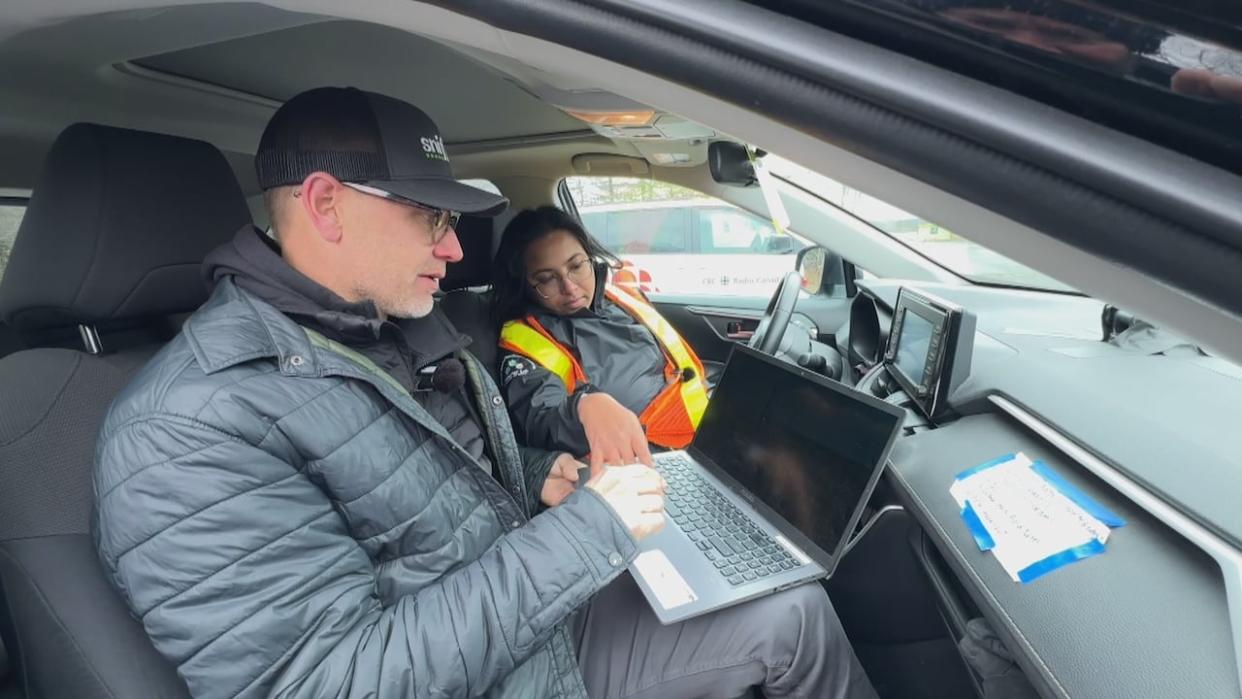
As the black SUV crawls slowly along a gravel road, in the passenger seat Nadia Tarakki taps her finger on the screen of her laptop.
"This is what a plume looks like," she says, her eyes fixed on a flat blue line that's suddenly shot upward.
Out the car's window is a field of brown winter grass dotted with short concrete pillars. It doesn't look like anything around the pillars is moving, but Tarakki knows better.
"That one was leaking a little bit," she says to her fellow researcher, Amirali Foomajd, who's at the wheel. "We'll keep an eye on that one."
The grassy field where Tarakki and Foomajd are driving is a disused landfill outside of Halifax, and the leak they're tracking is methane. It's coming out of wells drilled deep into the pile of long-buried garbage, and being picked up by the sensitive measuring equipment on their black SUV.
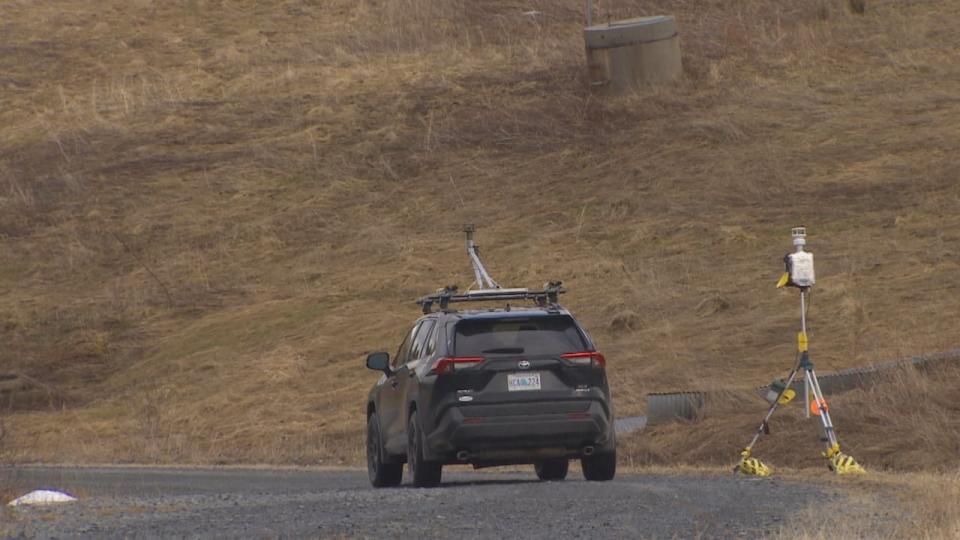
The Flux Lab’s SUV drives toward a capped concrete methane well. Beside the car is a stationary methane sensor placed there by the measurement team. (David Laughlin/CBC)
Canada only has estimates of how much methane its 3,000 landfills are emitting. That's a problem when it comes to fighting climate change. Tarakki and Foomajd are part of a team tasked with fixing that, travelling from landfill to landfill measuring emissions.
Measuring a menace
Methane is invisible and odourless. While carbon dioxide gets most of the attention when it comes to climate change-causing gasses, methane is its own menace.
While it stays in the atmosphere for only about 12 years compared to hundreds of years for carbon dioxide, over a 100-year span, methane is at least 25 times more powerful than carbon dioxide at trapping heat in the Earth's atmosphere.
In the spring of 2022, Environment and Climate Change Canada asked the Flux Lab at St. Francis Xavier University in Antigonish, N.S., to get more accurate measurements of landfill methane. It needed that information because of Canada's international commitments to reduce global methane levels in order to meet Intergovernmental Panel on Climate Change targets.
The lab has received around $1 million for this work from different federal agencies and about $150,000 from the United Nations.
"We visited landfills all across the country, from Vancouver Island to St. John's," says Dave Risk, who is head of the lab and the Brian Mulroney Institute for Government Research Chair in Climate Science and Policy at the university.
"We measured landfills that were open and closed, big and small, and basically benchmarked their methane emission levels."
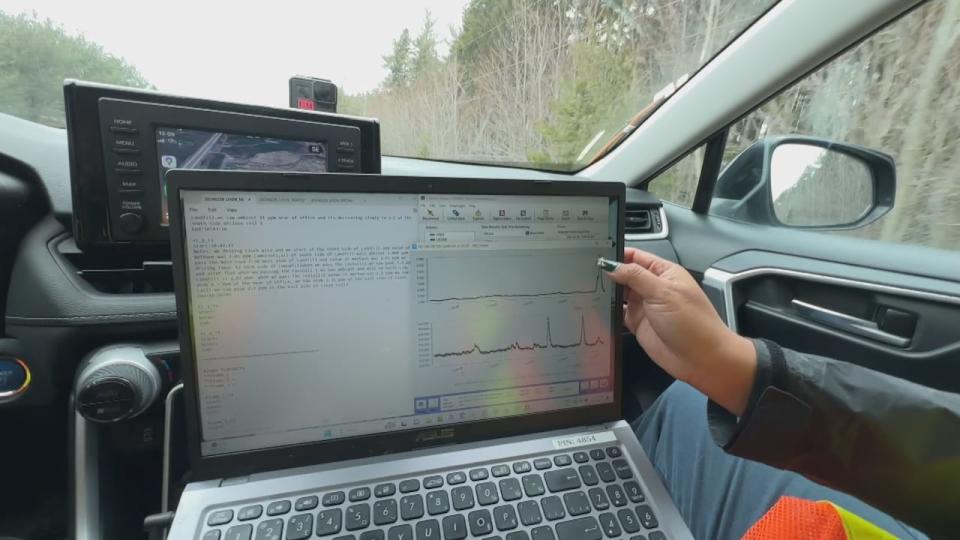
Nadia Tarakki puts her thumb on her laptop screen, registering a plume of methane. (Shaina Luck/CBC)
The federal government is currently proposing new regulations for the landfills that accept almost all of Canadians' household waste. The final regulations are expected to be published this year, and Flux Lab's research is helping to shape them.
Canada's major sources of methane include oil and gas extraction, burps from livestock like cows, and the breakdown of organic material in landfills.
"If we're going to regulate, we need to be starting in the right place. And if landfill operators will be spending money on mitigation and installing capture systems, then we need to know that their investments are for the right reasons and will make a difference," says Risk.
The Flux Lab's 20-person team visited about 145 landfills across Canada to understand methane emissions from landfills of varying sizes under different conditions. This will provide a much better picture than earlier estimates, Risk says.
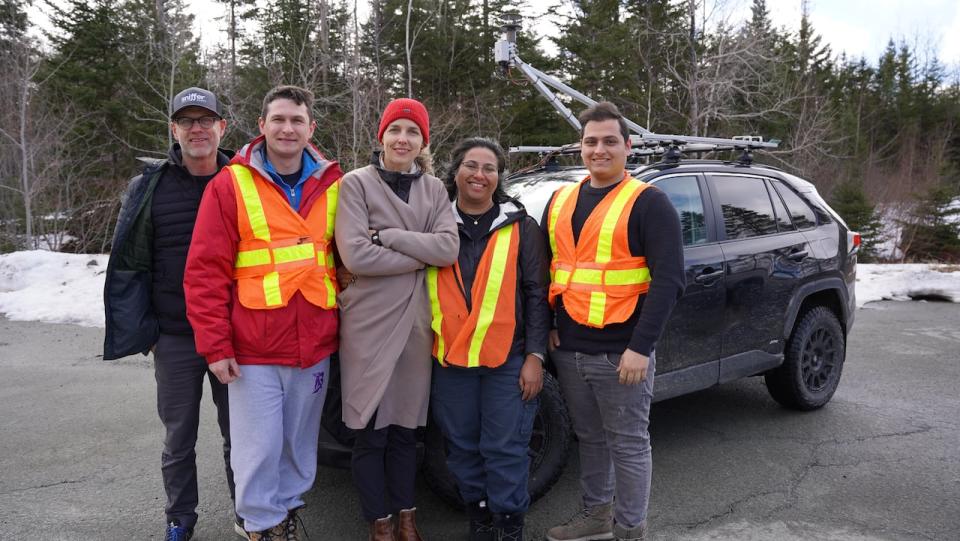
Members of the St. Francis Xavier Flux Lab stand in front of their mobile laboratory, with measurment equipment attached to the vehicle's roof. From left to right: Dave Risk, Yurii Dudak, Chelsie Hall, Nadia Tarakki and Amirali Foomajd. (David Laughlin/CBC)
The lab has just released its conclusions, which were that actual emissions are slightly lower than the national estimates. Landfills require moisture and heat to produce methane; Canada's cold, dry climate helps reduce that.
That's good, Risk says. But a cold climate doesn't reduce methane to zero, and Canadians' household garbage will be a problem for decades.
A 100-year legacy
The first site the Flux Lab team measured was a closed landfill in Upper Sackville, outside Halifax, which they revisited in February.
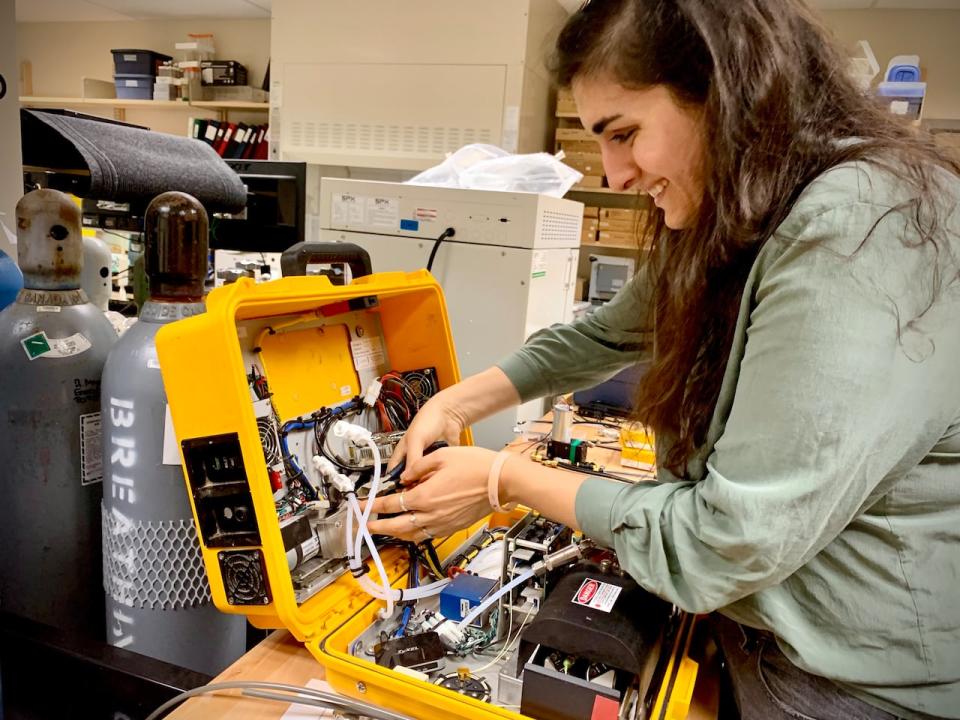
A member of the Flux Lab works on gas analysis equipment that will be carried in the trunk of the mobile lab. (Flux Lab)
"Just driving by on the highway the first time it was very evident that there was a really big methane source here," says Risk.
He was amazed: the site stopped accepting waste in 1997, and between about 2007 and 2021 a private company used its methane to generate power. Yet the emissions were still high enough to read the plume from a distance.
"This landfill is still emitting and it's been closed for 25 years," Risk says. "It will keep emitting for probably another 75 years before it returns to normal. So landfills don't just emit from the waste today, but they emit from the waste that we threw out decades ago."
Getting the emissions down
Many landfills manage methane by drilling wells into the piles of garbage and piping out the gas. The gas can be burned off in a flare. The energy from burning methane can also be used to generate electricity.
According to Environment and Climate Change Canada's greenhouse gas inventory, landfills are the largest source of methane in the Atlantic provinces. But the estimates suggest emissions in the region have dropped since 1990.
In the 1970s and '80s there were hundreds of unregulated dumps around the region. In New Brunswick alone there were more than 300, according to the commission responsible for solid waste in the Fundy region.
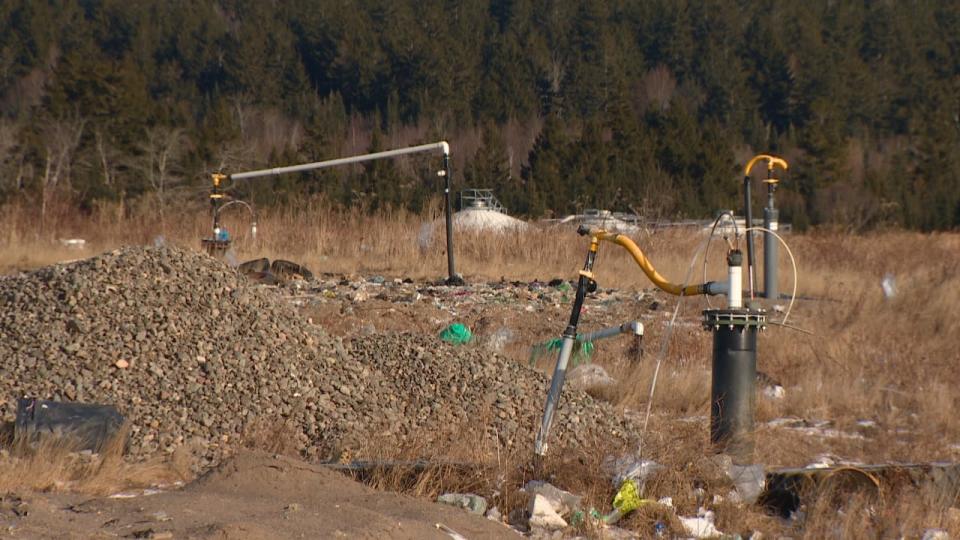
A methane gas capture system installed at a landfill in Saint John. (CBC)
In the 1990s, provinces began to move to landfills with more environmental regulations. Some areas began recycling and composting, helping to keep organic materials that create methane out of the landfills. Nova Scotia banned organics from landfills completely in 1995.
Some landfills also started to harness and burn their methane for electricity, such as the active landfill in Crane Mountain, N.B., and the now-closed landfill in Upper Sackville.
These measures seem to have had an effect.
Environment and Climate Change Canada produces methane emissions estimates that cover both active and closed landfills.
In 2021, the emissions estimates were 1,344 equivalent kilotonnes of carbon dioxide for the four Atlantic provinces, which is about three-quarters of what they were in 1990.
But these emissions need to keep going down, according to Jennifer Winter, an associate professor at the University of Calgary and a science adviser to Environment and Climate Change Canada.
Methane "has short-term effects that are more potent than carbon dioxide, and so it's one of these gasses that we can mitigate that has very short term, immediate benefits for mitigating climate change," she said in a recent interview.
Winter studied the way provinces and territories regulate landfill methane and found a patchwork of different rules.
"The current regulation, it mostly focuses on safety rather than climate mitigation," she said.
For example, Winter points out that some provinces do not require landfills to maximize their use of methane by using it to generate electricity.

Jennifer Winter is an associate professor at the University of Calgary and a departmental science advisor at Environment and Climate Change Canada. (Jennifer Winter/University of Calgary)
She believes standardized federal regulations are the way to go.
Right now the federal government is proposing to regulate landfills that meet certain criteria, including those that accept more than 10,000 tonnes of solid waste per year, which is relatively small threshold as far as landfills go. For comparison, Prince Edward Island's only landfill can accept up to 26,000 metric tonnes of waste annually.
Winter says methane emissions from oil and gas are already regulated in Canada, and more can be done to get emissions down.
"I think landfills are one of those opportunities because it's fairly simple: 'let's put in a gas capture system, let's monitor, and let's prioritize capture for use,'" she said.
"It's one of the potentially easy wins."
MORE TOP STORIES


